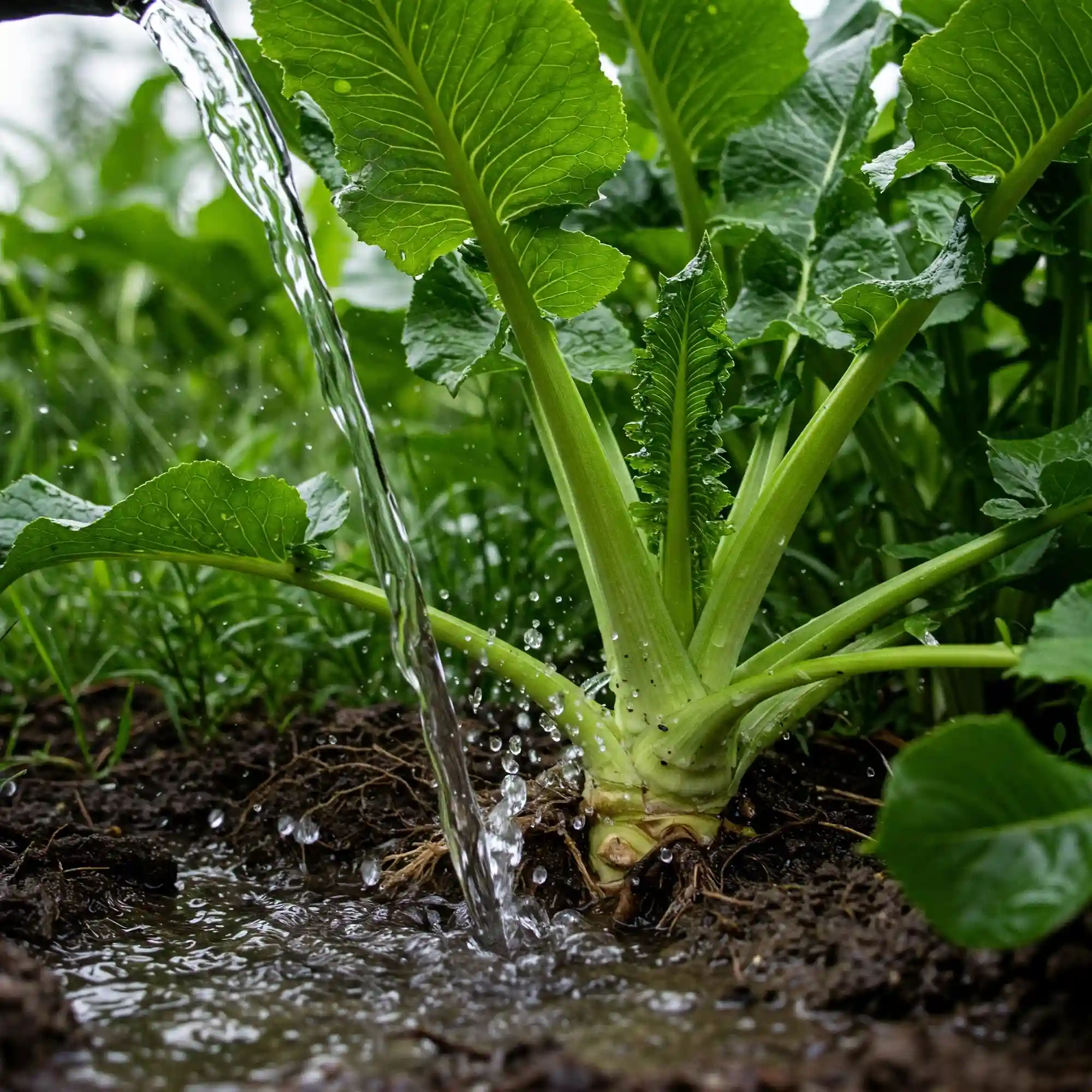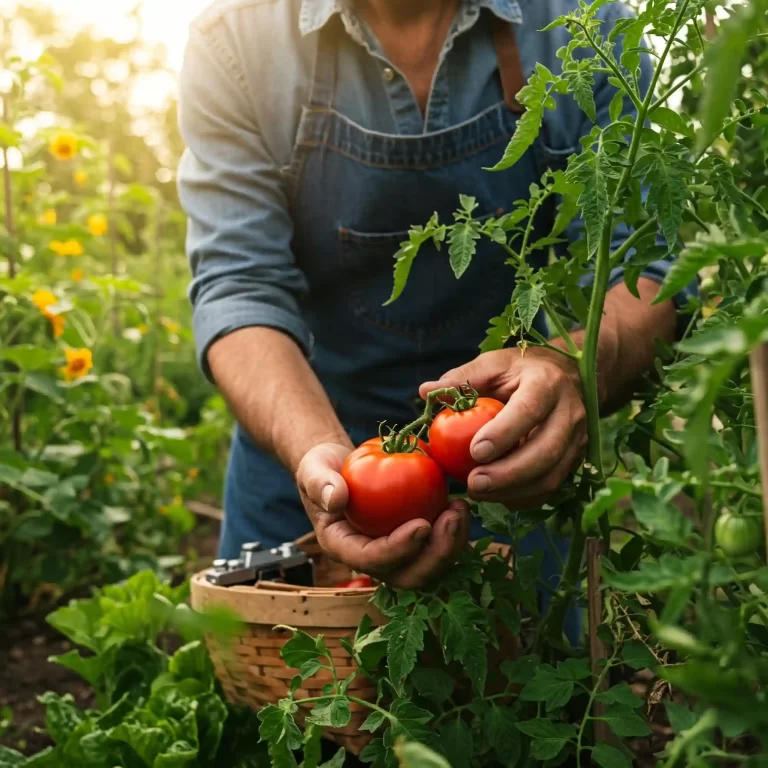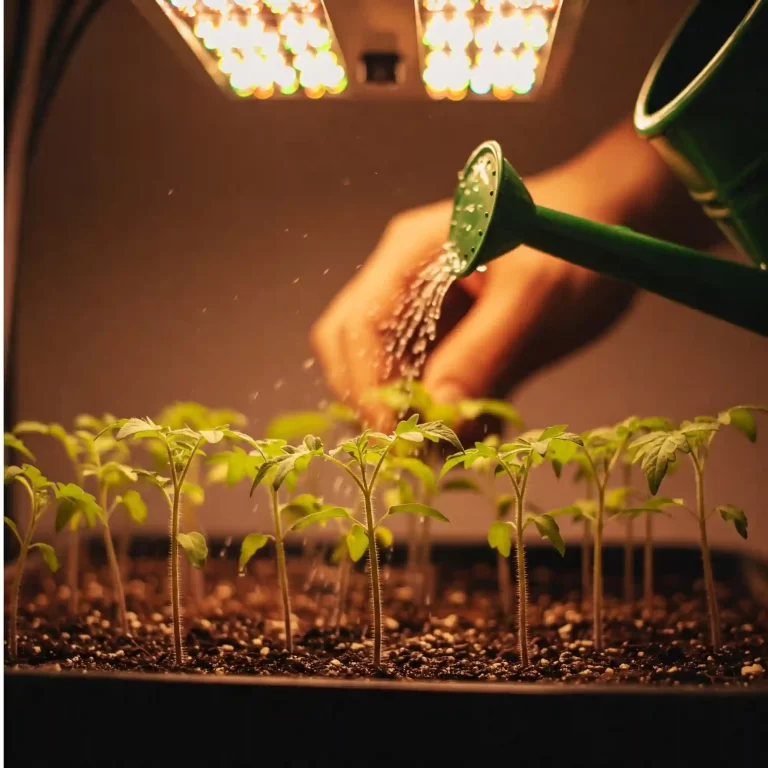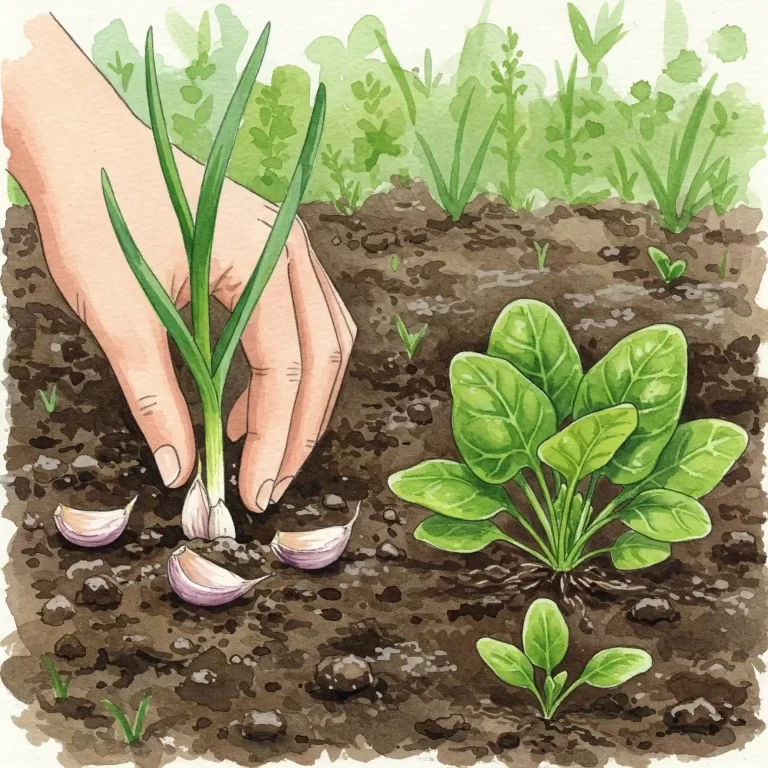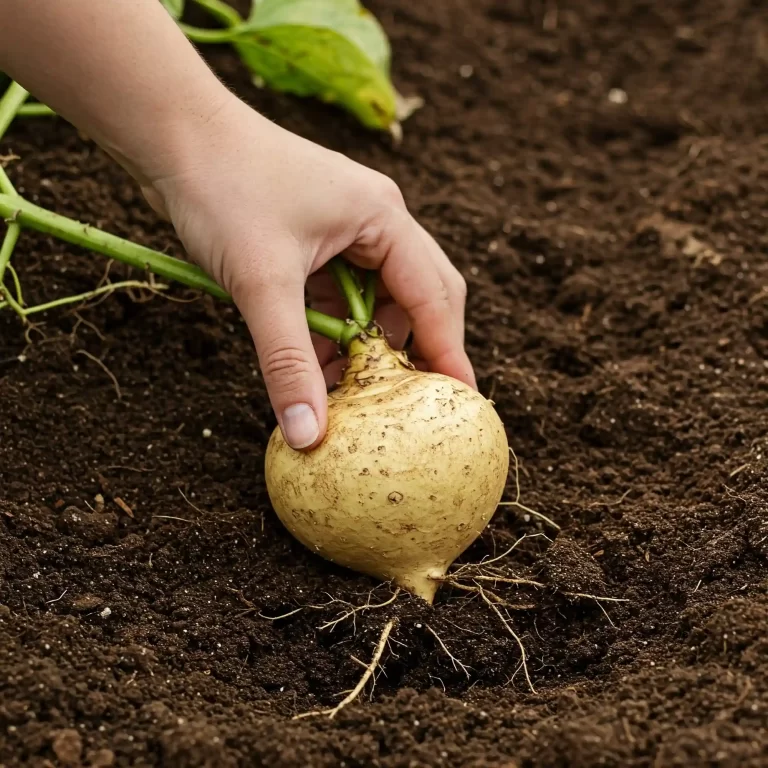Frustrated with bland, store-bought horseradish? You crave that sharp, pungent flavor straight from your garden, but maybe you’ve struggled with growing it before. Maybe your roots were small, or the flavor wasn’t quite right. I understand that feeling of wanting to cultivate something truly special. That’s why I’m here to share my insights and guide you through the process of growing horseradish successfully. Let’s transform your garden into a source of potent, flavorful horseradish.
1. Choosing the Ideal Location: Sun and Soil for Horseradish
When it comes to cultivating horseradish, selecting the perfect location is paramount. Both sunlight and soil conditions play crucial roles in determining the success of your horseradish crop.
Sunlight:
Horseradish thrives in abundant sunlight. Ideally, your chosen location should receive at least six hours of direct sunlight daily. Adequate sunlight exposure not only promotes vigorous growth but also contributes to a more robust and pungent flavor profile. If you plant horseradish in a shaded area, you might observe slower growth and a less intense flavor.
Soil:
The soil composition is equally critical for horseradish cultivation. Horseradish prefers well-draining, fertile soil. Heavy clay soil can lead to root rot, while sandy soil might not retain enough moisture.
- Soil Type: Loamy soil, which is a balanced mixture of sand, silt, and clay, is considered ideal for horseradish. This type of soil offers a good balance of drainage and nutrient retention, providing an optimal environment for root development.
- Soil Preparation: Before planting, it’s essential to prepare the soil to ensure optimal growth. This involves amending the soil with compost or well-rotted manure. These organic materials not only improve soil structure but also add essential nutrients that are beneficial for horseradish growth.
- Drainage: Proper drainage is crucial for horseradish. If the soil is waterlogged, it can lead to root rot, which can weaken the plant and significantly reduce yield. If you have heavy clay soil, consider incorporating sand or perlite to enhance drainage.
- Soil pH: Horseradish prefers a slightly acidic to neutral soil pH, ideally between 6.0 and 7.5. You can use a soil test kit to determine the pH of your soil and adjust it accordingly if necessary.
Why Drainage Matters:
- Root Rot: Poor drainage can lead to root rot, a fungal disease that affects the roots of the horseradish plant. Root rot can weaken the plant and significantly reduce yield.
- Aeration: Well-draining soil allows for better aeration, which is essential for healthy root development.
Ideal Soil Conditions for Horseradish
| Feature | Ideal Condition |
| Soil Type | Loamy |
| Drainage | Well-draining |
| pH | 6.0-7.5 |
| Fertility | High (amended with compost) |
Benefits of Proper Soil Preparation
- Improved root growth
- Increased yield
- Reduced risk of disease
- Enhanced flavor
By carefully selecting the ideal location and preparing the soil appropriately, you’re laying the foundation for a successful horseradish harvest.
2. Planting Horseradish: Root Cuttings and Sets Explained
Now that you’ve selected the ideal location and prepared the soil, it’s time to plant your horseradish. You can propagate horseradish using two primary methods: root cuttings or sets.
Root Cuttings:
- Obtaining Root Cuttings: The simplest method is to use root cuttings from an existing horseradish plant. Select healthy, disease-free roots that are at least ½ inch in diameter.
- Preparing the Cuttings: Cut the root into sections, each about 3-4 inches long. Ensure each cutting has at least one bud or “eye.”
- Planting: Plant the root cuttings horizontally in the prepared soil, about 2-3 inches deep. Space the cuttings 18-24 inches apart.
Horseradish Sets:
- What are Sets: Horseradish sets are commercially available pieces of horseradish root that are specifically prepared for planting.
- Planting Sets: Plant the sets horizontally in the prepared soil, at a depth of 2-3 inches. Space the sets 18-24 inches apart, similar to root cuttings.
Timing of Planting:
- Spring Planting: The ideal time to plant horseradish is in early spring, after the last frost has passed. This allows the plants to establish themselves before the hot summer months.
- Fall Planting: In milder climates, you can also plant horseradish in the fall. However, be sure to plant early enough to allow the roots to establish themselves before the ground freezes.
Planting Depth and Spacing:
- Depth: Plant the root cuttings or sets horizontally at a depth of 2-3 inches.
- Spacing: Space the plants 18-24 inches apart to allow for adequate root development.
Additional Tips:
- Consider companion planting: Horseradish can benefit from companion planting with other vegetables such as potatoes, asparagus, and tomatoes.
- Water thoroughly after planting: Ensure the soil is evenly moistened after planting.
By following these guidelines, you can successfully plant your horseradish and set the stage for a bountiful harvest.
3. Watering and Feeding Your Horseradish: Essential Care Tips
Now that you’ve successfully planted your horseradish, providing consistent care is crucial for healthy growth and a bountiful harvest. This involves regular watering and appropriate fertilization.
Watering:
Horseradish plants require regular watering, especially during dry periods. The frequency of watering will depend on factors such as soil type, weather conditions, and the size of the plants.
- Frequency: Aim to keep the soil consistently moist but not waterlogged. Water deeply and thoroughly, allowing excess water to drain away.
- Watering Methods: Hand watering or using a soaker hose can be effective methods for watering horseradish. Avoid overhead watering, which can splash soil onto the leaves and increase the risk of fungal diseases.
Fertilizing:
Horseradish plants benefit from regular fertilization to promote vigorous growth and enhance flavor.
- Organic Fertilizers: Organic fertilizers, such as compost tea or well-rotted manure, are ideal for horseradish. These fertilizers provide slow-release nutrients and improve soil health.
- Application: Apply fertilizer around the base of the plants, avoiding direct contact with the leaves. You can apply fertilizer once or twice during the growing season.
Organic Fertilization:
If you prefer organic gardening practices, there are several effective ways to fertilize your horseradish plants without using chemical fertilizers:
- Compost Tea: Compost tea is a liquid fertilizer made from compost. It is rich in beneficial microorganisms that can improve soil health and enhance plant growth.
- Well-Rotted Manure: Well-rotted manure is a natural source of nutrients that can be applied around the base of the plants.
Mulching:
Mulching around the base of your horseradish plants can help conserve moisture, suppress weeds, and regulate soil temperature. Organic mulches, such as straw or wood chips, can also add nutrients to the soil as they decompose.
Additional Tips:
- Monitor for signs of stress: If the leaves of your horseradish plants start to wilt or turn yellow, it may be a sign of inadequate watering or nutrient deficiency.
- Adjust watering and fertilization based on plant needs: The amount of water and fertilizer required will vary depending on the specific growing conditions and the size of your plants.
By providing consistent watering and appropriate fertilization, you can ensure that your horseradish plants thrive and produce a bountiful harvest of flavorful roots.
4. Managing Pests and Diseases: Keeping Your Horseradish Healthy
While horseradish is generally a hardy plant, it can still be susceptible to certain pests and diseases. By taking proactive steps to manage these potential issues, you can ensure your horseradish plants remain healthy and productive.
Common Pests:
- Flea beetles: These small beetles can skeletonize the leaves of horseradish plants.
- Aphids: These sap-sucking insects can weaken plants and transmit diseases.
- Slugs and snails: These pests can feed on the leaves and roots of horseradish.
Pest Control Methods:
- Handpicking: For small infestations, handpicking pests can be an effective control method.
- Neem oil: Neem oil is a natural insecticide that can be used to control aphids and other soft-bodied insects.
- Diatomaceous earth: This natural powder can be used to control slugs and snails.
- Row covers: Row covers can be used to protect plants from flea beetles and other pests.
Common Diseases:
- White rust: This fungal disease causes white, powdery spots on the leaves.
- Blackleg: This fungal disease can cause the stems of horseradish plants to rot.
- Root rot: This fungal disease can occur in poorly drained soils and can cause the roots to rot.
Disease Prevention:
- Proper drainage: Ensure the soil is well-drained to reduce the risk of root rot.
- Avoid overhead watering: Overhead watering can spread fungal diseases.
- Rotate crops: Rotating crops can help to break the disease cycle.
- Remove infected plants: If you notice any signs of disease, remove and destroy infected plants immediately.
Natural Pest Control:
- Companion planting: Planting companion plants such as garlic, onions, or marigolds can help to deter some pests.
- Encouraging beneficial insects: Attracting beneficial insects such as ladybugs and lacewings can help to control pests.
By implementing these preventative measures and taking prompt action if you notice any signs of pests or diseases, you can keep your horseradish plants healthy and ensure a successful harvest.
5. Harvesting Horseradish: When and How to Dig Up Your Roots
After months of diligent care, the time has finally arrived to reap the rewards of your labor – harvesting your horseradish roots. Timing and technique are crucial for a successful harvest.
When to Harvest:
Horseradish roots are typically ready for harvest in late fall or early spring.
- Fall Harvest: In milder climates, you can harvest horseradish in the fall, after the first frost.
- Spring Harvest: In colder regions, it’s best to harvest horseradish in early spring before new growth begins.
How to Harvest:
- Prepare the Area: Clear the area around the horseradish plants of any debris.
- Dig Carefully: Use a garden fork or shovel to gently loosen the soil around the base of the plant. Be cautious not to damage the roots.
- Lift the Roots: Carefully lift the roots from the ground. You may need to loosen the soil further to extract larger roots.
- Clean the Roots: Remove any excess soil from the roots.
- Inspect the Roots: Discard any damaged or diseased roots.
Tips for Harvesting:
- Wear gloves: Horseradish roots can irritate the skin.
- Use a sharp knife: A sharp knife can be helpful for cutting through the roots.
- Harvest selectively: You can harvest some of the roots while leaving others in the ground to continue growing.
Harvesting for Storage:
If you plan to store your horseradish roots for later use, it’s best to harvest them in the fall. The roots will be more mature and better suited for long-term storage.
6. Storing Horseradish: Keeping Your Harvest Fresh
Proper storage is essential to preserve the freshness, flavor, and quality of your harvested horseradish roots. Here are some effective methods for storing horseradish:
Storage Methods:
- Refrigeration: Refrigeration is the most common method for storing horseradish. Store the roots in a plastic bag or airtight container in the crisper drawer of your refrigerator. This method can help to preserve the roots for several weeks.
- Root Cellar: If you have a root cellar or a cool, dark location with temperatures between 32°F and 40°F, you can store horseradish roots for several months.
- Freezing: Horseradish roots can also be frozen for long-term storage. To freeze horseradish, you can either freeze the whole roots or grate them and freeze them in an airtight container.
Tips for Storage:
- Clean the Roots: Before storing, thoroughly clean the roots to remove any dirt or debris.
- Discard Damaged Roots: Discard any damaged or diseased roots.
- Maintain Proper Storage Conditions: Ensure the storage area is cool, dark, and well-ventilated.
- Check Regularly: Check the stored roots periodically for any signs of spoilage.
Using Stored Horseradish:
- Grate or Grind: Grate or grind the horseradish roots as needed.
- Combine with Vinegar: You can combine grated horseradish with vinegar to create a flavorful condiment.
- Use in Recipes: Horseradish can be used to add a pungent flavor to a variety of dishes, including sauces, stews, and marinades.
By following these storage guidelines, you can enjoy the fresh flavor of your homegrown horseradish throughout the year.
7. Propagation: Growing More Horseradish from Your Own Plants
One of the most rewarding aspects of growing horseradish is the ability to propagate new plants from your existing harvest. This allows you to expand your horseradish patch, share the bounty with friends and family, or even start a small business.
Propagation Methods:
- Root Cuttings: The most common method of propagating horseradish is by using root cuttings. Select healthy, disease-free roots that are at least ½ inch in diameter. Cut the roots into sections, each about 3-4 inches long, ensuring that each cutting has at least one bud or “eye.” Plant the root cuttings horizontally in well-prepared soil, at a depth of 2-3 inches.
Tips for Successful Propagation:
- Timing: The best time to propagate horseradish is in the spring, after the last frost has passed.
- Soil Preparation: Prepare the soil as you would for planting new horseradish plants.
- Watering: Water the newly planted cuttings thoroughly and consistently.
- Patience: It may take several weeks for the root cuttings to establish themselves and begin to grow.
Expanding Your Horseradish Garden:
Once your propagated horseradish plants have established themselves, you can gradually expand your horseradish patch. This allows you to enjoy a continuous supply of fresh, homegrown horseradish year after year.
Sharing with Others:
Propagating horseradish also allows you to share this flavorful plant with friends, family, or even local gardeners. Sharing the joy of homegrown horseradish is a rewarding experience.
By mastering the art of horseradish propagation, you can ensure a continuous supply of this pungent and flavorful root vegetable for years to come.
FAQ:
- How to grow horseradish vegetable in raised garden beds?
Raised garden beds can offer several advantages for growing horseradish. They provide excellent drainage, which is crucial for preventing root rot. The raised beds also allow for better control over soil composition, enabling you to create a more ideal growing environment for your horseradish plants. When planting horseradish in raised beds, ensure that the soil is well-drained and amended with compost or other organic matter.
- How to grow horseradish vegetable successfully in cold climate zones?
Growing horseradish in colder climates requires some extra care. Mulching around the base of the plants with a thick layer of straw or leaves can help to protect the roots from freezing temperatures. You can also consider planting horseradish in a slightly warmer microclimate, such as a south-facing slope.
- What is the best way to grow horseradish vegetable in sandy soil?
Sandy soil can be challenging for horseradish as it tends to dry out quickly. To improve water retention, amend the sandy soil with organic matter such as compost, peat moss, or well-rotted manure. You may also need to water more frequently, especially during dry periods.
- How to grow horseradish vegetable and companion plants for maximum yield?
Companion planting can benefit both horseradish and other plants in your garden. Some beneficial companion plants for horseradish include:
- Potatoes: Potatoes can help to deter pests and improve soil fertility.
- Asparagus: Asparagus can provide support for the horseradish plants and help to improve soil drainage.
- Tomatoes: Tomatoes can deter some pests and improve the flavor of horseradish.
- How to grow horseradish vegetable in containers for small gardens?
While horseradish typically prefers in-ground planting, it can also be grown in containers. Choose a large container with ample drainage holes and fill it with a well-draining potting mix. Ensure the container receives at least six hours of direct sunlight per day. Water regularly and fertilize as needed.
Conclusion
Growing horseradish can be a rewarding and fulfilling gardening experience. By following the tips and techniques outlined in this guide, you can cultivate healthy, flavorful horseradish plants and enjoy the fruits of your labor. Remember to choose the right location, prepare the soil properly, provide adequate care, and harvest your roots at the optimal time. With a little patience and attention to detail, you can successfully grow horseradish and savor the unique flavor of this versatile root vegetable.
I hope this comprehensive guide has been helpful. Happy gardening!
